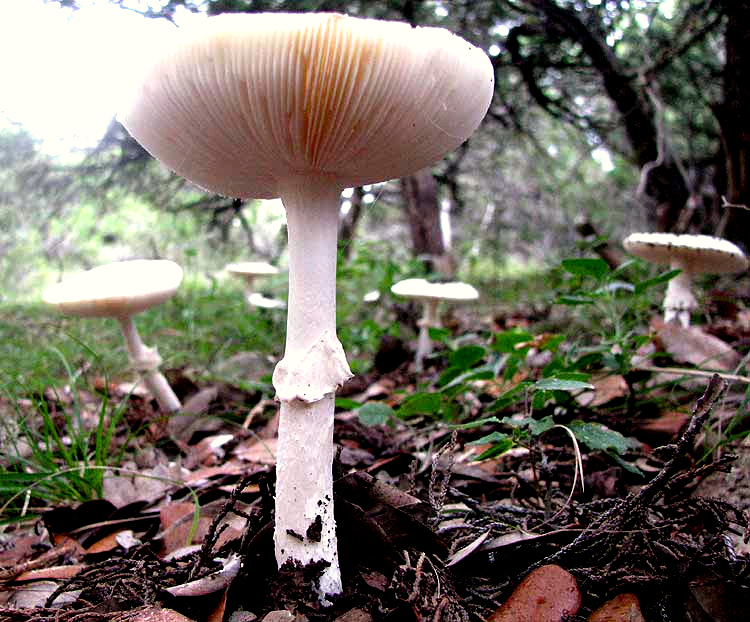
WHAT ARE MUSHROOMS?
Mushrooms are the spore-producing reproductive structures of certain kinds of fungi. Usually they emerge from soil, or dead or living tree trunks or roots, though a few remain underground. At the right you see four typical mushrooms collected during a walk in the woods.
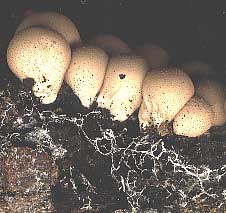
Mushrooms are not the main "working body" of a fungus responsible for acquiring food and water. That's accomplished by white, threadlike hyphae, which grow through soil or organic matter. At the left you see hyphae inside a cross section of decaying tree bark. Certain strands of hyphae join at the bark's surface to produce edible Stump Puffball mushrooms, Lycoperdon pyriforme. Mushrooms form when hyphae reach a certain stage of maturity, the environment is right, and two sexually compatible hyphae meet.
IS THAT A MUSHROOM?
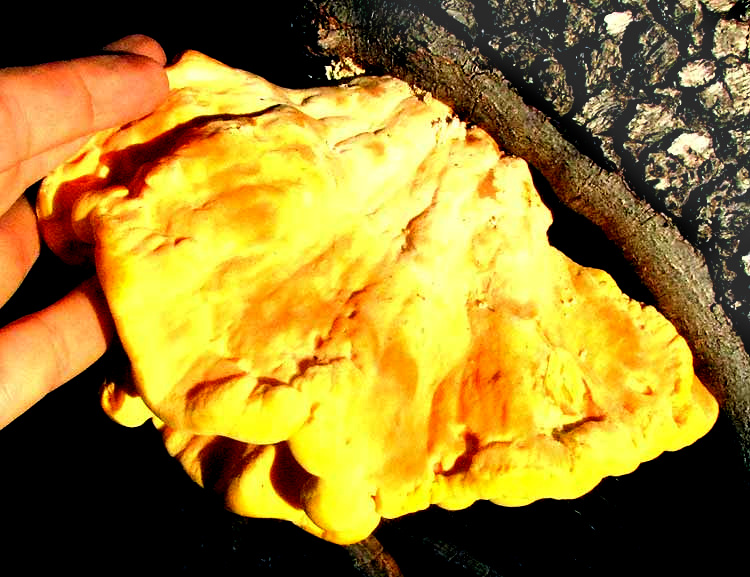
At the right, that's the Chicken of the Woods or Sulfur Shelf, Laetiporus sulphureus, growing from a wound on the trunk of a Texas Liveoak tree. Unlike the four mushrooms atop this page, it bears no stem, so is it really a mushroom? Most people but not everyone would say that it is, if only because when the fruiting bodies are young they are good to eat.
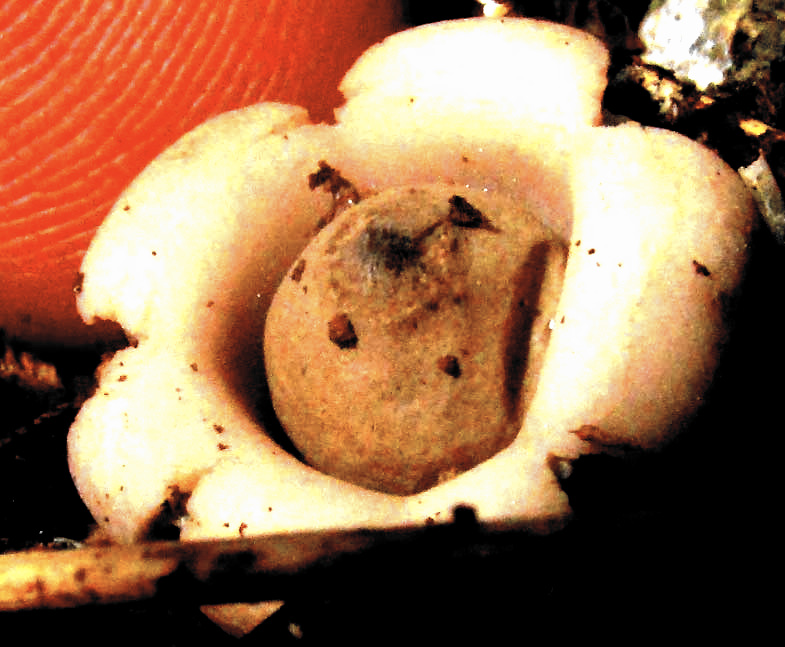
At the left, that Earthstar, Geastrum saccatum, which starts out looking like a little brown golfball, but then "arms" curve back exposing an acorn-like bladder inside, in which a hole develops at the top, releasing spores formed inside the bladder... is that a mushroom?
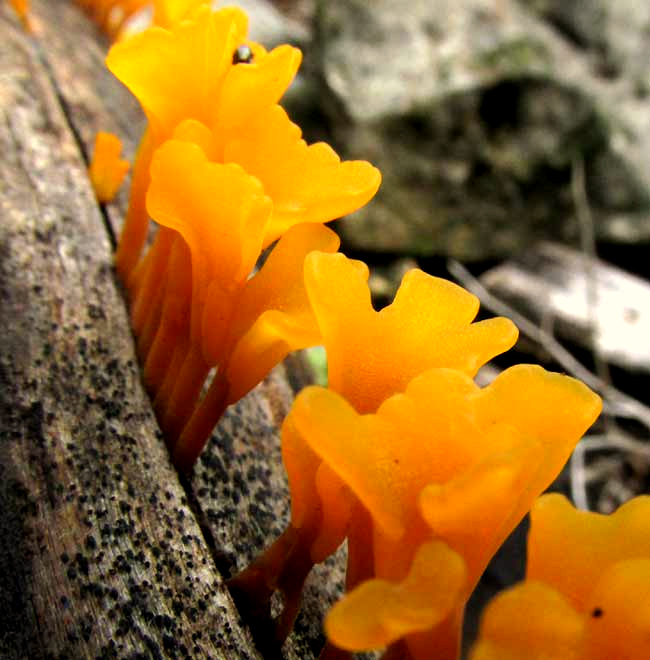
And that Fan-shaped Jelly Fungus, Dacryopinax spathularia at the right: Those are blobs of rubbery flesh with no gills and no holes issuing spores, so are they mushrooms?
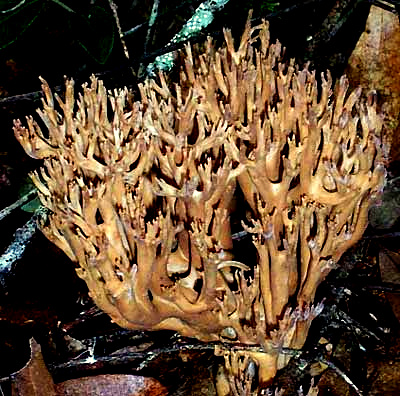
And that coral fungus at the left... ?
The point being made is that the word "mushroom" is a general term, the concept of which varies from person to person. You can't argue about what a mushroom is because there's no technical definition for it.
If people around you call something a mushroom, and it's the reproductive structure of a fungus, then it's a mushroom.
A good general site about mushrooms is at Mushroom-Appreciation.com
On the web a site in Denmark called MycoKey helps you identify 283 genera of fungi. The key provides helpful illustrations.
Where Can You Find Mushrooms?
In many habitats mushrooms can appear at any time, especially when it's warm and wet. Overnight they can pop up in grassy lawns. Sometimes they form large circles or partial circles known as "fairy rings." If your lawn was recently a forest, mushrooms from fungi that earlier inhabited the forest's leaf litter and root zone can emerge, relics of a bygone ecosystem. They grow on the trunks of large trees, and on fallen trunks and limbs.
Just keep your eyes open. Mushrooms are nearly everywhere, at least where there's moisture, warmth and plenty of organic matter.
